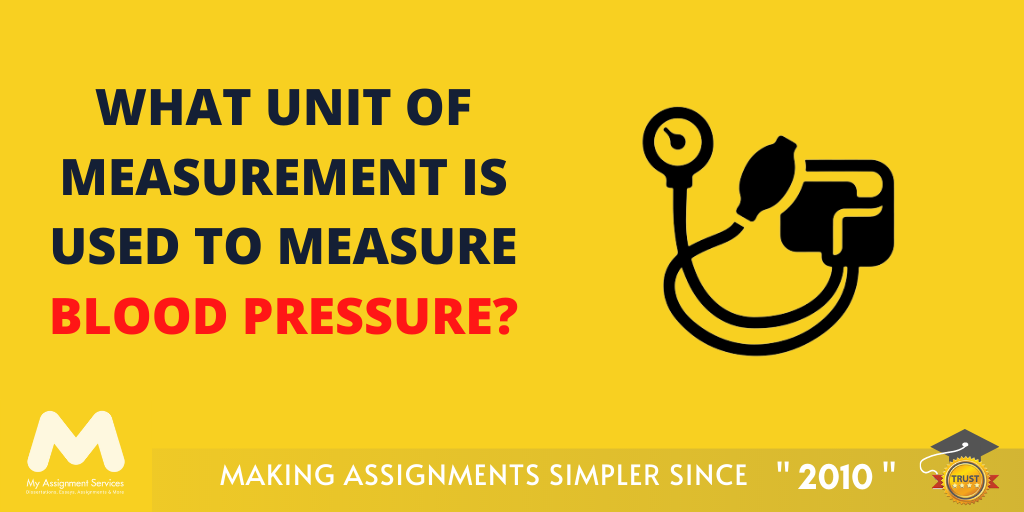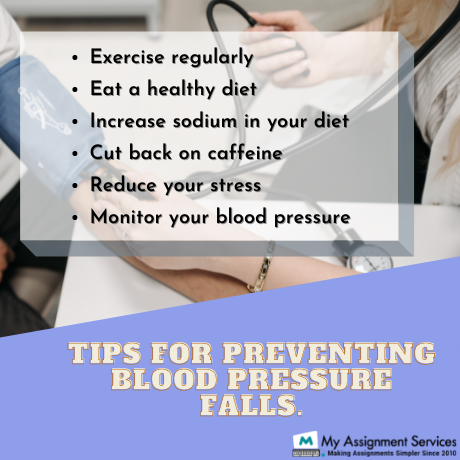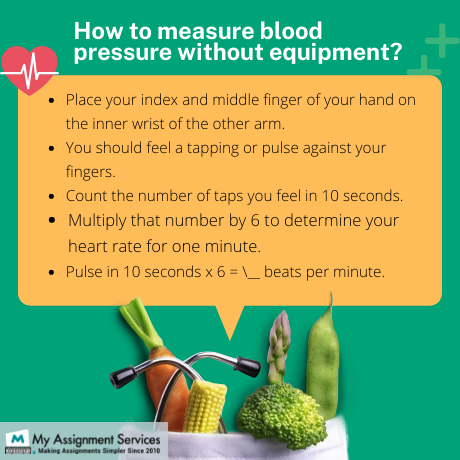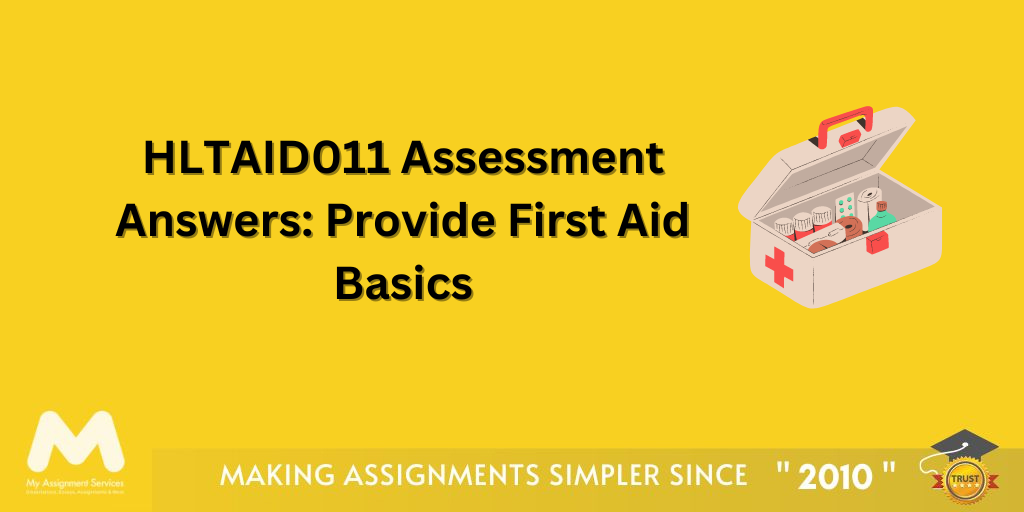
Are you a nursing or medicine student pursuing research for your assignment? You just Googled ‘Blood Pressure Measurement/Falls prevention’ and came across our blog; read forth to learn about the various reasons for blood pressure fall and how to avoid hypertension.
Blood pressure is nothing more than the projection of the constant beating of our heart that allows the flow of blood throughout our body. When you visit a physician or the hospital for a minor or major ailment, the doctor first measures your blood pressure before diagnosing any illness. The reason for doing this is that the heart is responsible for maintaining the blood flow and purifying our blood. Various diseases can be diagnosed by monitoring the heart's condition.
The easiest way of measuring the heart's function without an ECG test is to measure blood pressure. Studies show that one of every five adults has been diagnosed with high blood pressure in the UK. But, how to know if you're going through the same condition? What are the symptoms?
Regular physical exercises, playing sports,
and regular physical activities lower blood
pressure related issues and prevent
coronary heart diseases and stroke.
-World Health Organisation
The answer to that is there are no accurate symptoms for predicting high/low blood pressure. The method to determine this is a medical examination or measuring your blood pressure at home. Various methods can be used for measuring self blood pressure; you must first understand the difference between standing and laying down blood pressure and the Blood Pressure Measurement/ Falls prevention techniques.

Why is the Difference Between Lying and Standing Blood Pressure Important?
The device used for measuring blood pressure is mostly accurate. Still, there can be slight variation in results depending on factors like the patient's diet, posture, or if the patient is suffering from a medical condition. The readings may vary but measuring multiple times might record the accurate blood pressure.
The unit for measuring the blood pressure in humans is millimetres of mercury (mmHg); there is generally a fall of 20mmHg for aged patients or ones who have diabetes. Hence, doctors often measure both lying and standing blood pressure. Postural hypotension, or the change in a person's blood pressure when they stand up, is a sign of abnormally low blood pressure. Patients with such medical conditions feel dizzy or blackout after some physical activity. Such a condition is prevalent in aged patients.
Studies show that high blood pressure can
signify dementia in adults (40 to 60 years old).
The main objective of blood pressure regulation is to guarantee the proper blood flow of organs, especially when workloads rise. This is based on cardiovascular and respiratory integrity, adequate fluid maintenance, and other vasodilatory substances. Also, the blood pressure readings depict the proper functioning of a person's organs; people with high or low blood pressure are suffering from several health conditions.
Blood pressure measured in lying down or sitting is lower than standing posture for a healthy person. But blood pressure dropped in the standing posture for patients with hypotension, compared to sitting, reclined, and sitting position with crossed legs. The standing posture had the highest heart rate and blood pressure compared to the other postures.
Seeking Nursing Assignment Help in the UK? get it from phd experts from various academic fields at My Assignment Services website. Fill out the enrollment today to avail of the best services at the best prices.

How to Measure Blood Pressure at the Hospital and Home?
Blood pressure is taken for various reasons, including diagnosis and follow-up. To guarantee that patients get the therapy and treatment in a timely way, precise data are required to ensure that. Patients who suffer from a heart condition, high blood pressure or diabetes have to measure their blood pressure regularly. They can visit the hospital to get their measure or measure using blood pressure measuring tools at home, but there is various caution while doing so.
At Hospital
An expandable cuff is first wrapped around the arm by a medical professional. Next, the doctor will use the pump to fill the air in the arm cuffs, it will slightly tighten. Then the blood pressure using the metre attached to the sleeve.
While monitoring your heartbeat with a stethoscope and monitoring the scale on the metre, the doctor will progressively let the air out of the sleeve on your area to loosen it. This is a simple and speedy procedure. The medical professional may not need to use a stethoscope if they use a digital or computerised blood pressure machine.
Adults over 50 are at a high risk of
developing increased blood pressure
and hypertension; hence they must
consume less than 3/4 of a tablespoon
of salt per day.
At Home
Ensure the stethoscope nose is just over the artery as you place the cuff onto your arm. An indicator on the sleeve may determine the position of the stethoscope. The cuff's bottom edge must be roughly an inch over your elbow. Make the sleeve snug, but not quite tight, with the material attachment.
Inflate teh sleeve till the metre reaches 30 and then monitor the gauge by releasing the air from the cuff. The metre should rise 2-3 points pre heartbeat, wait for the pulse beat; note down the readings as this is your pulse rate.
Practising is required to use a manual blood pressure measuring device; using a digital machine will show the readings on the monitor without a stethoscope. Also, a digital device is preferred. Patients with a medical condition have to measure their blood pressure multiple times, and it has to be accurate.
Blood Pressure Measurement/ Falls Prevention: How Can You Prevent Blood Pressure From Falling?
Here are some tips for preventing low blood pressure:
- Increase sodium intake as it helps maintain blood pressure levels when consumed moderately.
- Avoid consuming alcoholic beverages as they can lower blood pressure.
- Sitting cross-legged has proven to increase blood pressure.
- Stay hydrated, frequently consume water and small meals.
- Avoid sudden symptoms.
- Heed your symptoms of low blood pressure, if any and consult with your doctor regularly.
Sphygmomanometer, a device used to
measure blood pressure, was invented in
1881 by Samuel Siegfried Karl Ritter von Basch.
Like high blood pressure, a person suffering from low blood pressure must also pay attention to their condition. A person with symptoms of low blood pressure must stay aware of their health and regularly consult the doctor. Abdominal levels of high/low blood pressure are signs of an underlying disease and must not be ignored.
Made it till the end of this blog? Click on other live blogs to get insight on various academic topics. Get nursing assignment help in the UK at affordable prices through live guided sessions with experts. Enrol today or contact us through our mobile app.
Related Study Materials
Our Experts can answer your Assignment questions instantly.
Ask Question0 Comment
Get It Done! Today
1,212,718Orders
4.9/5Rating
5,063Experts













Loved reading this Blog? Share your valuable thoughts in the comment section.
Add comment